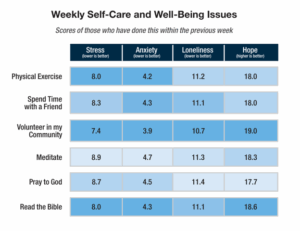
NASHVILLE, Tenn. (BP)–Among about 95 people who have worked on the Holman Christian Standard Bible, I’m one of a handful with an English-only pedigree. I can’t read Greek or Hebrew and, if I could, I might never get any work done. My job as an English stylist is to make sure the text from a translator in England through an editor in Chicago is consistent with another section from California edited in Texas. I’m a stylistic funnel of sorts, which would be easy except that I have to change things without changing anything.
By the time a translation text gets to me, biblical scholars and language specialists have hammered out hundreds of decisions about meaning and nuance, syntax and grammar. But that still leaves personal variations in word choice, sentence structure and application of the HCSB project guidelines. My challenge is to conform various sections from different translators without compromising the precision of the English rendering.
The most useful tools in my box are also the simplest: punctuation and word order. Subtle differences in how sentences are broken up and how various sections are connected can dramatically improve readability. Moving words and clauses around a little can bring big improvements as well. When I want to change a word or verb tense, or anything else that might affect the meaning, I talk it over with one of the translators first.
Although I don’t get caught up in scholarly arguments, I do ask questions about consistency and ease of reading. How easy is the translation to memorize? How does it flow when read aloud? Are there obscure words American readers might stumble over or misunderstand?
One more crucial element is the guffaw factor. Even if a translated phrase is clear and accurate, is it appropriate for Scripture? What about an irritated speaker saying, “Who are these guys?” Or an Old Testament patriarch calling somebody a jerk? Based on contemporary American English, these are probably the most accurate readings of these passages. But could a seventh-grader get through them without snickering? Could a layman read them from the lectern without hesitation? Probably not. So we settle on alternatives.
Once I’ve made my recommendations, the text goes to the general editor one last time to make sure it still meets HCSB standards of accuracy. Though my emphasis is on readability, the meaning and the message always come first.
When a section of text is finally committed to type, my work is invisible if I’ve done it right. There’s an inevitability about a good translation: whether you read it or listen to it, it sounds like it could never have been any other way. All the discussions and dueling e-mails about whether angels speak using contractions, and the countless other questions great and small that translators have wrestled with in a particular chapter or book, disappear beneath the surface, leaving a smooth, clean, confident page containing the inspired Word of God for a new generation and a new century.
Few projects in my life have been so intense and complicated. Fewer still have been so richly satisfying.
–30–
Perry is an author in Nashville, Tenn., in addition to serving as an English stylist with the Holman Christian Standard Bible.
















